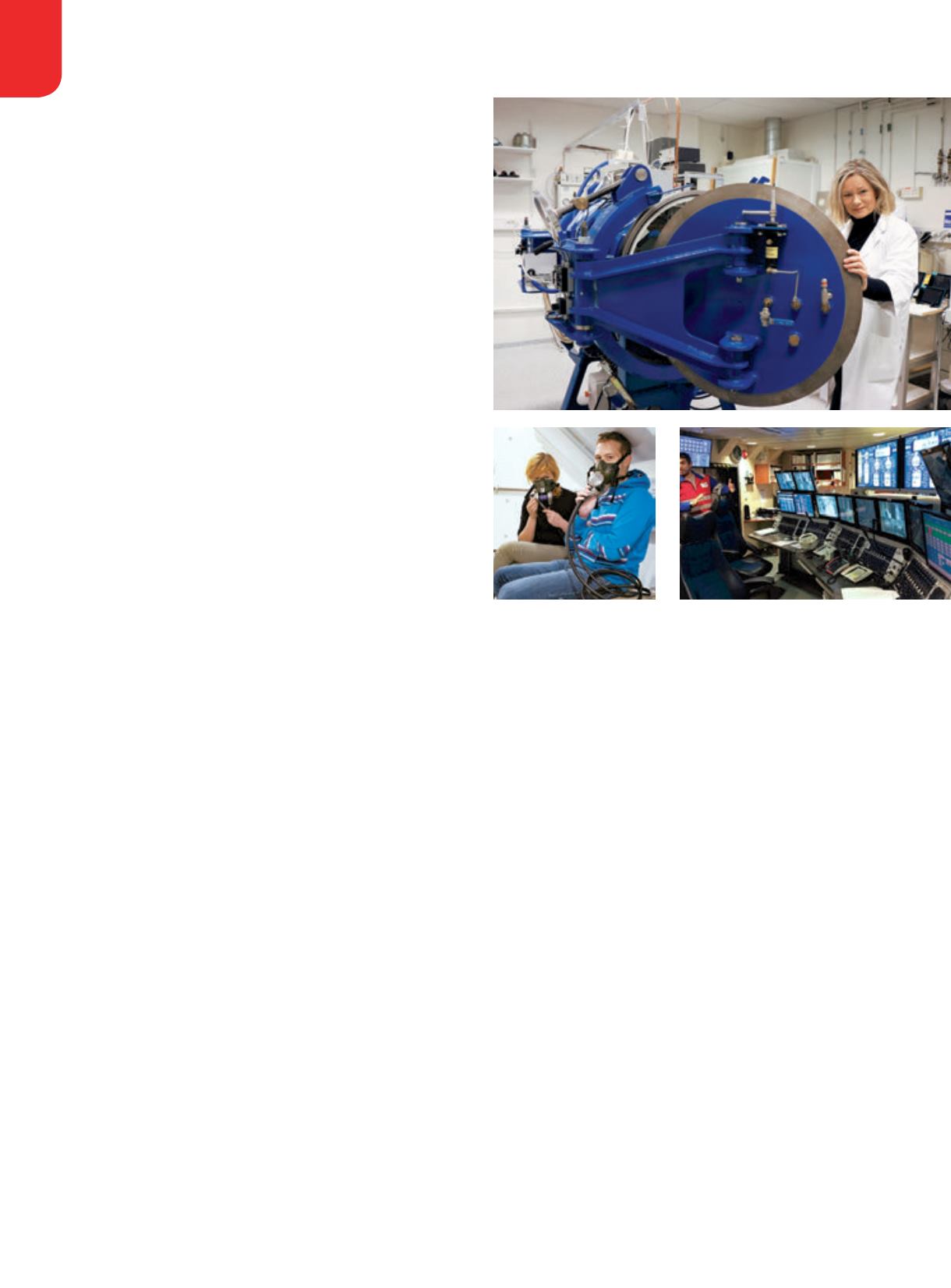

RESEARCH, EDUCATION & MEDICINE
RESEARCHER PROFILE
54
|
WINTER 2017
W
ith expertise lying at the
intersection of human
physiology, genetics and the
underwater environment,
Ingrid Eftedal, Ph.D., studies
the genetic and molecular
mechanisms involved in the body’s responses to diving.
A research scientist at the Department of Circulation
and Medical Imaging at the Norwegian University of
Science and Technology (NTNU), Eftedal’s diverse
background includes work in molecular biology,
forensic genetics, civil engineering, biophysics and
medical technology.
Early in her career, Eftedal worked on the development
of software control systems for small pressure chambers.
The impact of the 1986 Chernobyl accident on northern
parts of Norway influenced her doctoral research,
which examined the interactions between radiation
and living cells. Eftedal’s doctoral work aimed to better
understand how certain enzymes were able to prioritize
repair of the most important parts of genetic material.
Her work has since evolved into finding ways to better
understand how specific stressors in diving — such as
hypoxia, immersion and bubble formation — affect the
expression of genes.
She now studies the interactions between genes and
the environment that result from the body’s response and
acclimatization to diving. These interactions manifest as
changes in gene expression (i.e., state of activity). Injury
can occur in the diving environment because the body
responds either inadequately or excessively to stressors.
But not all changes in gene expression are bad. Some are
adaptive and help the body maintain balance, increasing its
resistance to damage or improving its ability to repair itself.
Dive safety has improved with the development
of better equipment, procedures, education and
awareness, but much remains to be learned about
divers’ risk of decompression sickness (DCS). In
her current fitness-to-dive project, Eftedal focuses
specifically on changes in immune-system cells.
She aims to determine which cells are affected by
diving, study the activity of genes within those cells
and examine the outcome of those changes to better
understand what is happening during breath-hold and
compressed-gas diving.
Eftedal’s goal is to distinguish between normal
physiological responses and diving-related disease
pathways. She was recently awarded the 2016 R.W.
“Bill” Hamilton Scholarship, funded by the DAN
Foundation and administered by the Women Divers
Hall of Fame, to support her research on working
saturation divers. We appreciate her willingness to talk
with us about her research.
How can gene expression help us distinguish
between normal physiological changes and
maladaptive responses to diving?
Changes in gene expression, such as upregulation and
downregulation of genes (see sidebar), can be detected
before the onset of symptoms or clinical signs of DCS.
This information can be used to create a profile of
which genes are being expressed and how much. Such
Clockwise from top:
Ingrid Eftedal, Ph.D., stands beside a small
hyperbaric chamber used for animal studies. Eftedal works in the
field as well as the lab; here a life-support supervisor shows the
dive control center aboard the
Skandi Arctic
, the most advanced
dive-support vessel in the world. Eftedal and Andreas Møllerløkken
breathe 100 percent oxygen during an experimental chamber dive.
Asking the
Right Questions
INGRID EFTEDAL STUDIES THE
BIOLOGICAL PROCESSES THAT
MAY LEAD TO DCS.
By Payal S. Razdan, MPH, EMT
KARI WILLIAMSON
EIRIK KJOS
INGRID EFTEDAL


















